How to wash a dog?
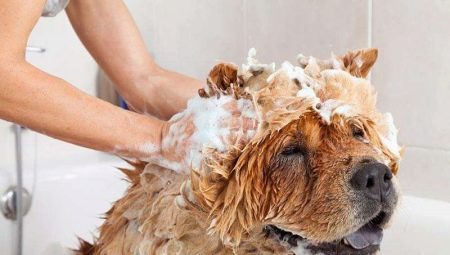
Every caring dog owner wants his pet to be full of strength, physically healthy, attractive in appearance and generally satisfied with his dog's life. This requires care, the lion's share of which is to monitor the dog's hygiene status. Every day you need to make sure that the dog feels good, that his skin and coat are normal, his eyes do not "flow", the ears are clean, the teeth and paws are also in perfect order.
But washing dogs, often and thoroughly, is not necessary for all pets. The more often the better principle does not work here. The washing schedule for a dog depends on the dog's age, breed, health, coat type, the need to perform at shows and other factors.
When should dogs be washed?
The average frequency of washing is once every 4-6 months, these are the recommendations of veterinarians. Washing refers to water procedures using soap. After a walk, it is enough for the animal to wipe its paws. In this case, soap and shampoo are not used, they must not be abused. All special soap-based products are able to wash off the lubricant that covers the skin of the animal, and therefore, deprive it of biologically intended protection. This is dangerous.
One of the common mistakes novice owners make: they often try to wash the puppy in order to rid him of the so-called dog smell. But frequent washing only makes this smell more noticeable, as the dog's sebaceous glands begin to work harder.
Ideally, you should wash your dog as soon as it gets dirty.
Dirty coat on the dog:
- not growing so fast;
- in long-haired breeds dumps faster;
- becomes difficult to comb;
- looks unaesthetic.
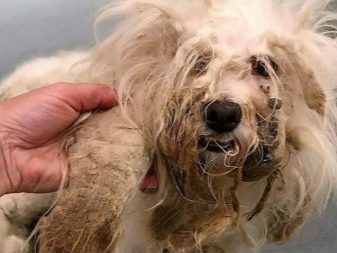
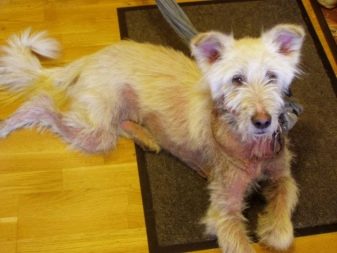
So, if the dog is healthy, wash it every six months - that will be enough. If the dog is very dirty, an unscheduled water procedure will be required. Before the show, the dog is also washed using special means, thanks to which its coat shines and becomes obedient.
Bathing your dog in hot weather is not the best way to help the animal cool down.... First, if you decide to bathe it, the water must be warm (due to the cool shower, the dog can become seriously ill). Secondly, after bathing in the shower or in the bathroom, it is very easy for the dog to get caught in a draft, which is also dangerous. That's why it is wiser to wet the dog with water from a bottle or wipe it off with a wet towel. If the dog is not afraid of bathing, you can dip him into a bath with moderately warm water (but not with his head!) And for a short time.
Swimming in natural reservoirs can also be dangerous: from a sharp temperature drop, animals often feel bad.
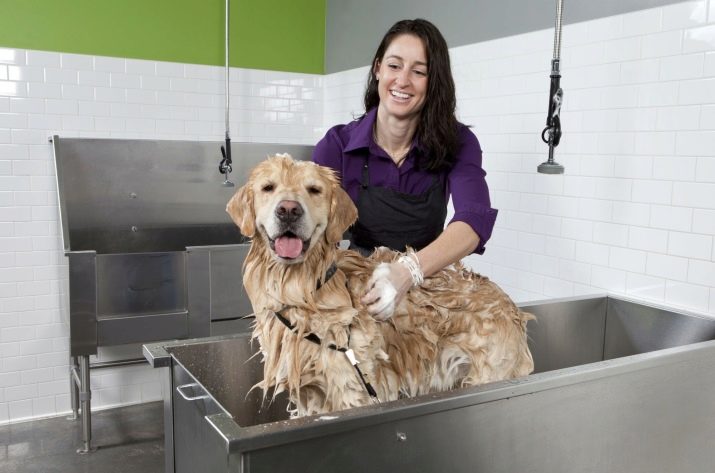
And if dogs of large breeds tolerate a sharp entry into the water relatively calmly, miniature dogs may suffer.
At what age can puppies bathe?
The first bathing of a baby usually occurs at the age of 3.5-4 months. By this age, the puppy should be vaccinated, and he should already undergo a course of anthelmintic therapy. In addition, at least 2 weeks must pass from the moment of the first vaccination and 3 weeks from the moment of the second.
If the puppy has to be bathed for the first time at an earlier age (for example, it is very dirty), it should be thoroughly wiped after the bath, and then kept under a warm blanket until completely dry.
Top 5 tips for bathing your puppy for the first time.
- Make sure your baby's bathing area is safe and pleasant for the puppy.... If he is afraid of her, panic will interfere with bathing. Therefore, even before the planned procedure, "introduce" the puppy to the bathroom: play with him there, treat him to something tasty, so that the associations with the room are positive. Do not limit your baby in actions: to teach him to be calm while swimming, let him explore the room. If the puppy is still very small (for example, you have to bathe a month old baby), arrange a bath for him in the kitchen sink. So the owner is comfortable, and the baby is familiar. Wash the sink thoroughly only before and after bathing.
- First, the puppy needs to be introduced to water. If the doggie is already 2 months old, and he is frightened by the sound of pouring water, this is your oversight.
- If the baby is very dirty, you will have to use shampoo. You can take only the one that is sold in pet supplies - shampoos for humans are not suitable for dogs. Even a small amount of "human" shampoo will dry out the skin of an animal, making it vulnerable to bacteria, viruses and parasites. The best choice is a gentle oatmeal shampoo for dogs.
- Prepare the first bathing area. Lay a towel on the floor, and a clean cloth should also be placed on the bottom of the tub or sink so that the dog does not slip or get scared. If the puppy thinks that he might fall, he will have to forget about calm bathing. Everything should be at hand: shampoo, a dipper, a towel in which you will wrap your pet.
- The water level should be up to the middle of the dog's height, no more. Check the water temperature with your elbow, if it is warm enough for your bath, it will be hot for the puppy. Bring the baby to the bath, talk to him all this time - stroke, joke, be affectionate. Puppies are sensitive to the intonation of the owner. Do not put it directly into the water: first, wet your fingers and walk over its fur, accompanying the movement with kind words. If the dog doesn't mind, continue this by zooming in on the action. You can reward your baby with a treat.
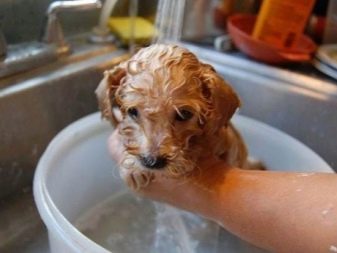

Don't fuss yourself and don't panic. If the household lined up in the bathroom as spectators, they will have to be disappointed - the procedure is not for onlookers. Ideally, if there is no one at home, you have everything prepared and are not going to be distracted by anything.Dress so that you can get a little wet, pull your hair away from your face.
Take the puppy wrapped in a towel to a warm room. Do not arrange any ventilation in other rooms during bathing.
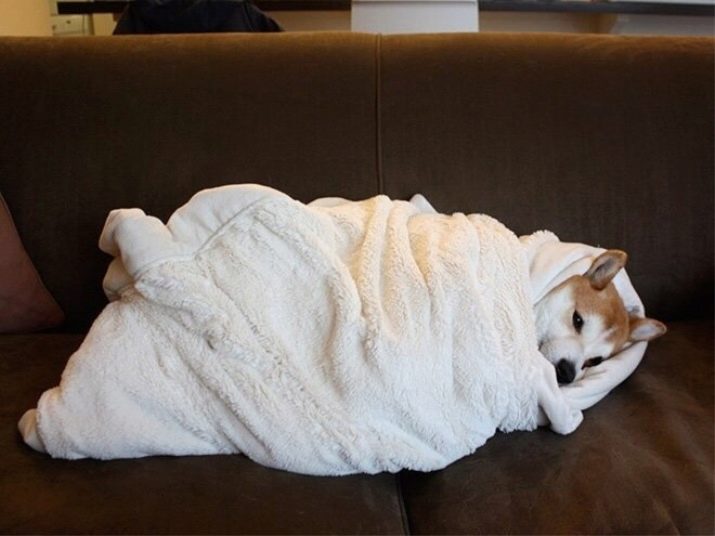
Stay close to the baby until he dries up - it's easier to deal with such stress with the owner.
Washing frequency
A street dog, whose home is a booth, does not need bathing at all. Bathing is enough for a pet dog once every 4 months, or even less often, if it is healthy and does not get very dirty. Some owners think that you can often bathe pet dogs, because they walk and pollute their paws (and not only). But the paws just need to be wiped with a damp cloth.

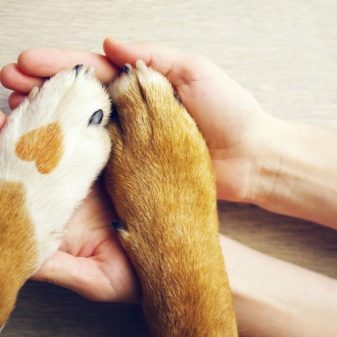
You cannot bathe your dog in winter. Unless there is a compelling reason, even a short swim should be avoided. You run the risk of washing off the fat layer from the pet's skin, which protects the dog, including from the cold. This is very dangerous for an animal of virtually any breed. Yes, and it is easier for the dog to catch a cold after winter bathing.
Long-haired breeds, of course, are forced to swim more often: the coat of such dogs has to be looked after, and without water procedures this is impossible. Bathe smooth-haired dogs 3-5 times a year. Decorative dog breeds are misunderstood by some owners: tiny cuties are mistaken for living toys, they arrange baths for fun for the sake of fun. This is very harmful to the health of animals, they can become painful, and cause severe inflammation.
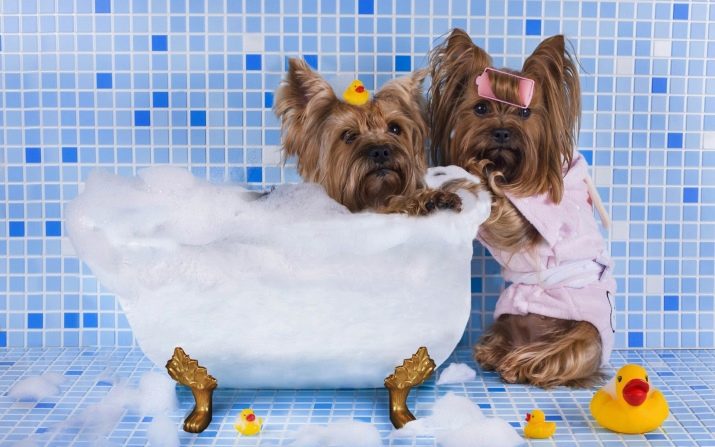
What tools can you use?
For washing dogs, special shampoos and gels are produced - do not even try to wash the dog with household, tar or baby soap. None of these soap products are suitable for your pet's skin.
Features of the choice of detergents for dogs:
- if the dog is prone to allergies or has special skin sensitivity, pick up a hypoallergenic shampoo with aloe, chamomile or a series of ingredients for him at the pet store;
- if the dog is white, you can buy shampoo for it with a light, harmless bleach - and this is available in pet supplies;
- use special tint shampoos for dogs with black and brown coats, they add extra shine to the dog's coat;
- if you have a hairless pet, he also needs a shampoo, only a special one - softening, creamy texture, with a high content of vitamin E;
- in winter, when bathing is impossible, you can use a special dry shampoo 1 or 2 times.
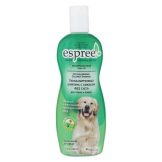

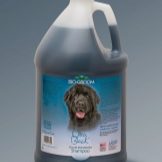
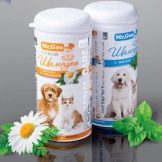
It is worth saying that a dog needs an unscheduled bath if it has problems (fleas, parasites, allergies, dandruff, eczema). Healing shampoos help to cope with ailments. If your dog is allergic, a special shampoo will relieve itching and swelling. And to rid your pet of dandruff, buy him a product based on oats, herbal decoctions and coal tar.
If you see special balms after washing at the pet store / pharmacy, take it. They help to moisturize the skin of the animal, and they also prevent the coat from tangling and make it easier to comb.
Where to bathe the dog - in the bathroom or in a basin on a pallet (if there is no bathroom in the house) - is not so important.
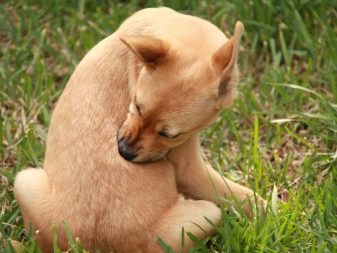
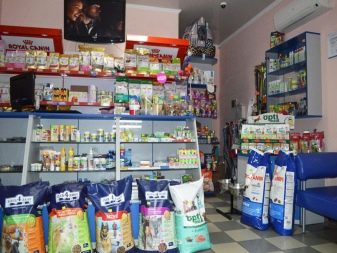
The main thing is that the room is warm, quiet, so that the dog is accustomed to being in the bathing place.
Preparation
An adult dog, as a rule, does not need to be especially prepared for bathing. He is already familiar with the bathroom, he is not afraid of the sound of pouring water, he stoically endures the water procedure. Many pets even like it. But there are all sorts of cases.
If you, for example, picked up an animal from the street, of course, it will have to be bought, vaccinated and treated for worms. And bathing for a street dog is most likely the first in life. The animal may already be an adult, but everything in a new home is unusual for him. Here you need special delicacy, treats, the maximum atmosphere of calmness and benevolence.
For the usual bathing procedure, you need to choose the right time: you should not be distracted by anything, the dog should not be sick, not walked, very hungry, or, conversely, has just eaten. Do not open windows and vents in the house, prepare towels and shampoos, balms, ladles, combs. Remember to cover the bottom of the tub or sink to prevent the dog from slipping.
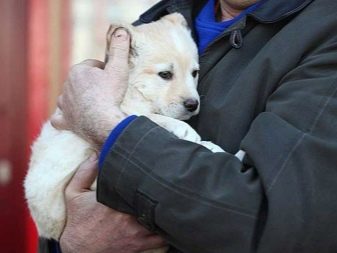
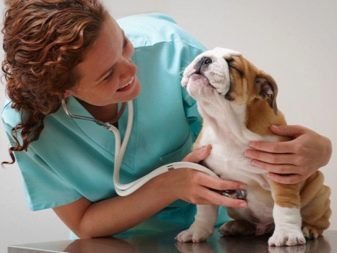
Step-by-step instruction
It is not difficult to bathe the dog at home. The main thing is not to wet his ears (there should be no water inside the ears), do not dip the dog with his head.
The procedure should be something like this.
- Prepare warm water, it should be slightly cooler than the one you put in your bath. A watering can or a ladle is suitable for wetting the animal's fur.
- Place the dog in a container, moisten its fur with water. Moisten abundantly, water the dog with a ladle, but without harsh action. Let the dog get used to it, get used to it.
- Dilute pet shampoo with water, you get a rich foam, which is easier to lather the dog's coat. Start washing your pet's back, then paws, tail, neck and stomach. The head should be washed last, making sure that the soap composition does not get into the eyes and ears.
- Wash the area around the anus, genitals.
- Do not keep shampoo on wool for more than 5 minutes, then rinse it off with warm water from a watering can or a ladle. In case of heavy contamination, the soaping procedure must be repeated twice.
- The dog should be rinsed according to the following system: first remove the foam from the head, then from the back, neck and chest. Only when the water has stopped foaming do you rinse your paws and stomach.
- After shampooing, use a balm. They need to rub the dog's fur, soak a little on the fur, rinse off after 1-3 minutes. Rub the gel in your palms first.
- Next, the dog needs to be dried. Most likely, you will need several towels: as soon as one gets wet, take another. But you need to wipe the pet thoroughly, this is done in the bathroom. Place the dog on the floor on which you previously laid a rag, and dry it thoroughly. Try to allow the towel to absorb as much water as possible.
- The dog can be dried with a hairdryer, but only on a gentle mode and using not the highest temperatures. Usually a hairdryer is used when drying show dogs: for them this “styling” becomes habitual, the owners specially accustom their pets to this procedure.
If you (and your dog) feel comfortable, you can shower them. The main thing is to observe the temperature indicators and not let the dog panic.
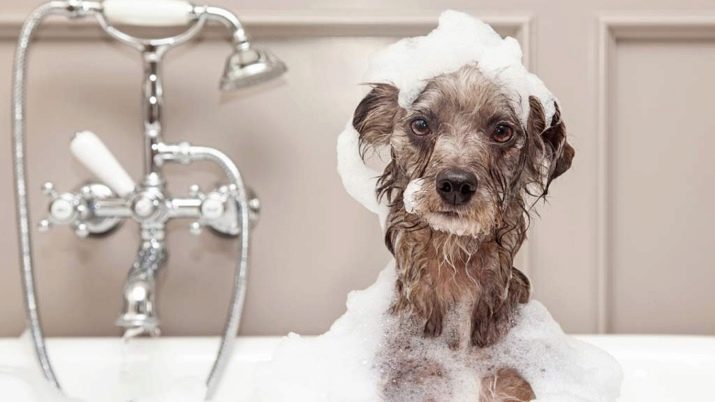
In the process of bathing, some owners feed the dogs: it is possible, but within reasonable limits.
Even if the dog loves to swim, do not frequent water procedures. There must be a reason for bathing, but giving your dog a bath just for pleasure is an extra risk for her. Perhaps, while bathing, the dog enjoys communication with the owner, his care and close attention: find an opportunity to present all this to your pet outside the bathroom.
For information on how to wash your dog, see the next video.






































